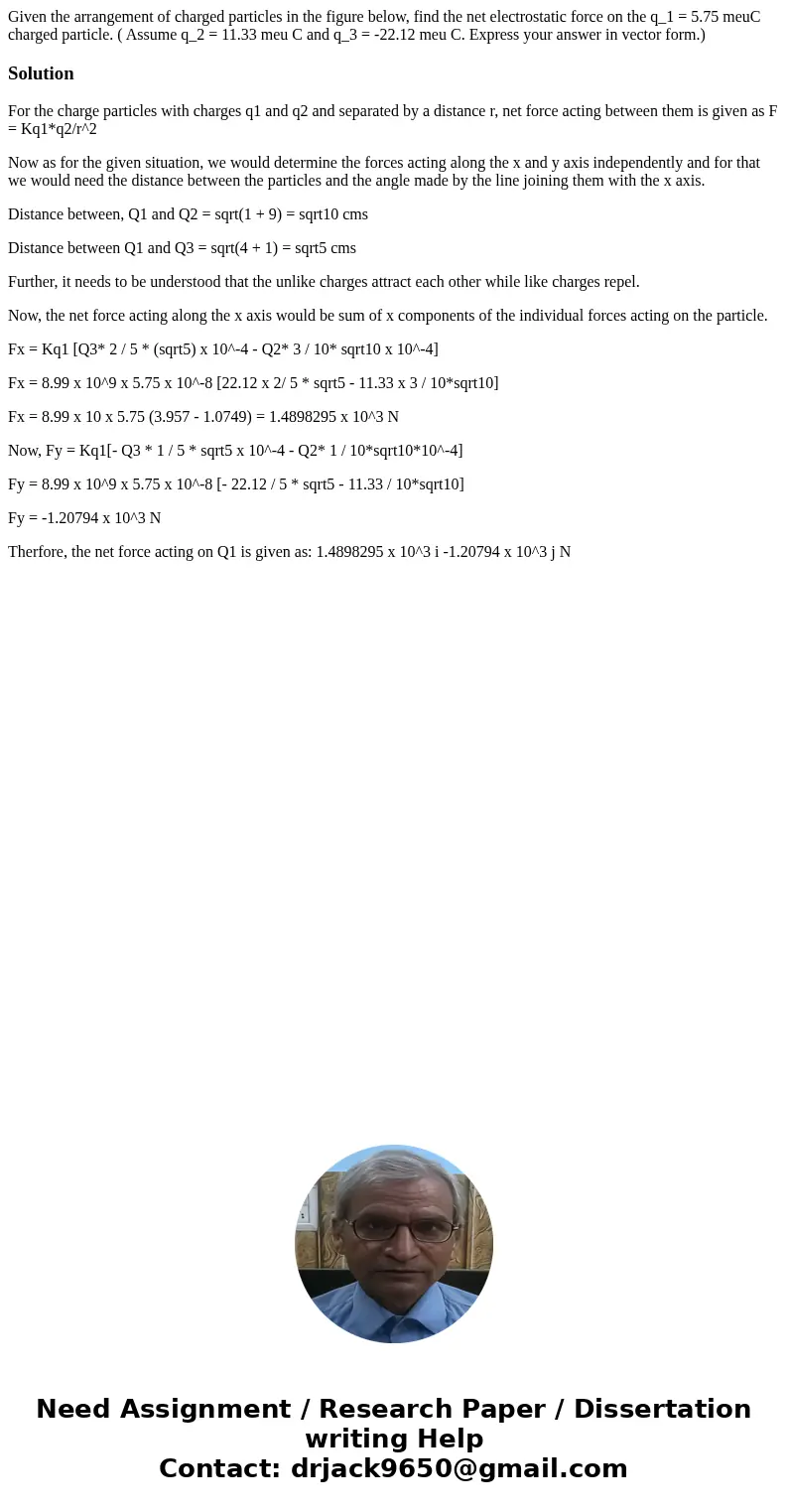Given the arrangement of charged particles in the figure bel
Solution
For the charge particles with charges q1 and q2 and separated by a distance r, net force acting between them is given as F = Kq1*q2/r^2
Now as for the given situation, we would determine the forces acting along the x and y axis independently and for that we would need the distance between the particles and the angle made by the line joining them with the x axis.
Distance between, Q1 and Q2 = sqrt(1 + 9) = sqrt10 cms
Distance between Q1 and Q3 = sqrt(4 + 1) = sqrt5 cms
Further, it needs to be understood that the unlike charges attract each other while like charges repel.
Now, the net force acting along the x axis would be sum of x components of the individual forces acting on the particle.
Fx = Kq1 [Q3* 2 / 5 * (sqrt5) x 10^-4 - Q2* 3 / 10* sqrt10 x 10^-4]
Fx = 8.99 x 10^9 x 5.75 x 10^-8 [22.12 x 2/ 5 * sqrt5 - 11.33 x 3 / 10*sqrt10]
Fx = 8.99 x 10 x 5.75 (3.957 - 1.0749) = 1.4898295 x 10^3 N
Now, Fy = Kq1[- Q3 * 1 / 5 * sqrt5 x 10^-4 - Q2* 1 / 10*sqrt10*10^-4]
Fy = 8.99 x 10^9 x 5.75 x 10^-8 [- 22.12 / 5 * sqrt5 - 11.33 / 10*sqrt10]
Fy = -1.20794 x 10^3 N
Therfore, the net force acting on Q1 is given as: 1.4898295 x 10^3 i -1.20794 x 10^3 j N

 Homework Sourse
Homework Sourse